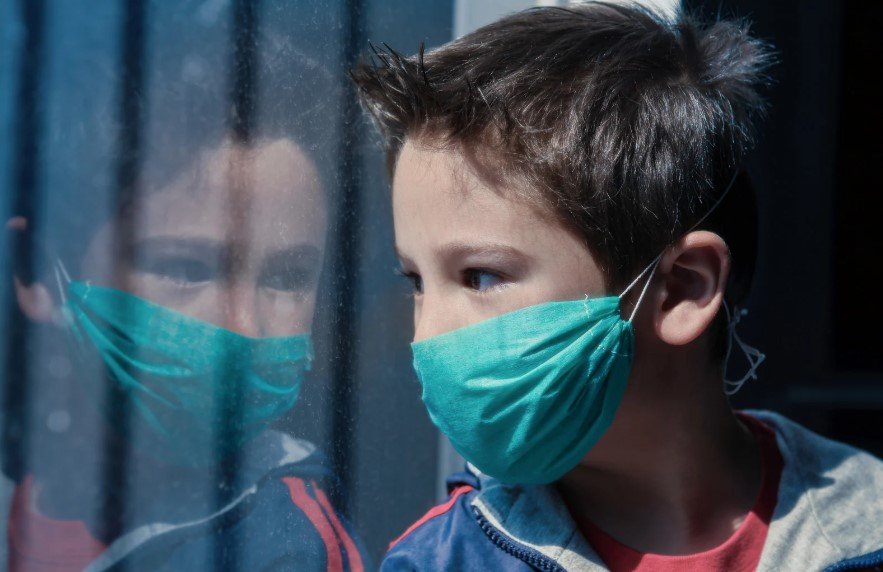In 2025, American workers face a growing mental health emergency, with nearly half reporting life was easier during the COVID-19 pandemic. This unexpected sentiment reveals the depth of psychological distress caused by political chaos, economic strain, and an overwhelmed healthcare system. Telehealth psychiatry is emerging as a key solution to address these unmet mental health needs, offering accessible, stigma-free support to combat workplace stress.
The Shocking Reality: When 2020 Feels Better Than 2025
In a startling revelation that should concern every employer and healthcare leader, nearly half of U.S. employees say life was easier during the COVID-19 pandemic than it is now—just two months into 2025. This isn’t mere nostalgia; it’s a wake-up call about the profound mental health challenges facing America’s workforce.
A comprehensive survey of 1,000 full-time U.S. employees reveals that 75% are experiencing some form of low mood, largely driven by politics and current events. Even more concerning, 58% of Gen Z respondents say life was easier during the pandemic than in early 2025, and 54% report that their mental health has never really recovered since the pandemic.
The Bottom Line: America’s workforce is more mentally distressed now than during the height of a global pandemic, creating an urgent need for accessible mental health solutions.
Politics and Current Events: The New Mental Health Crisis
The Rise of Political Stress
For the first time, current events are cited as a top stressor, surpassing even financial concerns and crime. A significant 71% of workers say political divisions negatively impact workplace culture, while 74% link political uncertainty to burnout.
Female employees (59%) and Gen Z (56%) are especially pessimistic about the country’s direction. This marks a pivotal shift in workplace mental health challenges, where political and social climates now directly affect job satisfaction, collaboration, and productivity.
Spillover into the Workplace
Political stress is no longer confined to personal life—it’s infiltrating the workplace. Employees are increasingly asking for mental health training related to navigating political anxiety, understanding insurance coverage, and responding to mental health crises. Traditional Employee Assistance Programs (EAPs) are struggling to keep up with these new demands.

The mental health crisis in 2025 has prompted many to reflect that life was easier during COVID, particularly as political stress in the workplace intensifies. As organizations grapple with burnout and disengagement, the demand for telehealth psychiatric treatment is growing. Employee mental health support must now address modern triggers, including political anxiety and global unrest, through personalized and accessible solutions.
Numbers Don’t Lie: Mental Health Crisis by the Statistics
The data paints a sobering picture of workplace mental health in 2025:
1 in 6 workers suffer from mental health issues at work.
76% experience moderate to high stress levels.
48% report their mental health declined in 2022.
28% feel “miserable” at work.
Compared to five years ago, 44% report feeling more stressed.
Gen Z workers are particularly vulnerable:
68% report current or past mental health struggles.
They experience stress 11.4 days per month, the highest of any generation.
Financial Consequences of Ignoring Mental Health
The True Economic Toll
Poor mental health impacts productivity, retention, and bottom lines:
Depression and anxiety cost the global economy $1 trillion yearly and may be $16 trillion by 2030.
In the U.S., job stress leads to $300 billion in losses annually.
Productivity and Engagement Loss
62% of employees are disengaged.
Unaddressed depression causes a 35% productivity drop.
Organizations lose $210.5 billion yearly due to absenteeism and reduced performance.
The Telepsychiatry Advantage Against Workplace Stress
Why Telehealth Works
Telepsychiatry offers scalable, immediate, and private mental health support:
36% of employees lack access to employer mental health benefits.
Only 50% understand how to use their insurance for mental health care.
13% feel comfortable discussing mental health at work.
Telehealth addresses this by offering:
24/7 access to licensed professionals.
Short wait times and immediate crisis intervention.
Private, stigma-reducing consultations.
What Employees Actually Want: The Care Gap Analysis
Demand for Holistic Support
81% say more mental health benefits are needed.
4 in 5 want training on benefits, crisis response, and stress recognition.
85% say managers are key to mental health outcomes—but most aren’t equipped to help.
The Manager Factor:
Managers influence 70% of team engagement variance. Without mental health training, their ability to foster well-being is limited.
Sector-Specific Stress: High-Risk Industries
Mental health issues are especially acute in sectors with high demands and low flexibility:
Construction: 15.8% report work-related mental health concerns.
Healthcare: 12.7%
Transportation: 12.4%
Education: 11.1%
Frontline and sandwich generation workers (those caring for both children and elderly parents) are among the least likely to use mental health benefits due to:
Shift-based work
Limited tech access
Cultural stigma
Financial constraints
Proving the ROI of Mental Health Investment
Clear Financial Returns
Every $1 spent on mental health yields $5.30 in ROI.
Organizations that prioritize mental health enjoy:
13% higher productivity
Employees are 2.3x less likely to feel stressed
2.6x more likely to have lower absenteeism
Despite the benefits, only one-third of HR leaders trust vendor ROI claims—highlighting the need for transparent, outcome-based telehealth solutions.

For companies across the East Coast, online mental health care access is no longer optional. From Gen Z and workplace stress to industry-specific challenges, licensed online psychiatrists East Coast offer scalable relief through virtual mental health care. Investing in affordable virtual psychiatry services brings measurable returns, especially when paired with manager mental health training and real-time outcome tracking.
Combating Stigma and Expanding Accessibility
Stigma remains a major barrier:
40% fear being judged if they talk about mental health at work.
Telehealth helps through:
Anonymous screening tools
Confidential consultations
Culturally sensitive peer support
Multilingual, mobile-friendly education resources
Accessibility for All:
After-hours care for shift workers
Multiple platform options (app, phone, desktop)
Sliding-scale fees and insurance compatibility
Telehealth Will Lead the Way
With nationwide reach and adaptability, telehealth providers are best equipped to meet evolving mental health needs. Their ability to deliver real-time analytics and integrated care across devices is key to future-proofing workplace wellness.
Conclusion: The Time for Action Against Workplace Stress is Now
68% of employees believe that political stress could be reduced with better mental health support at work. The workforce is calling for real solutions—and they’re willing to walk away if they don’t get them.
As Alyson Watson, CEO of Modern Health, stated: “Employees and managers are signaling an urgent need for more genuine mental health support.”
Employers that embrace comprehensive telehealth psychiatry today will not only safeguard their teams’ well-being but also build resilient, productive, and future-ready organizations.
To help your workforce thrive amid today’s mental health challenges, partner with a trusted telehealth psychiatry provider. East Coast Telepsychiatry offers tailored virtual mental health care, accessible 24/7, designed for modern workplaces. Schedule a consultation today and empower your team with expert, compassionate support.
